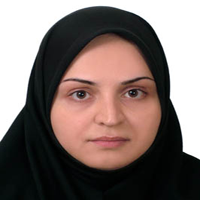Optimization and Comparison of Single and Combined Processes Using Hydrodynamic Cavitation for Dye Removal
The textile industry wastewater causes serious environmental problems due to its high toxicity and color. Therefore, it is necessary to find an effective treatment technology for removing organic dyes from wastewater. Cavitation is one such modern technique which has been considered for the treatment of complex pollutants because of its ability to generate highly reactive free radicals. Up to now, researchers have mostly focused on qualitative interpretations and related scientific techniques, and there has been no quantitative cost analysis for pollutant control in textile industries for decision making purposes. Future studies need to focus on the cost analysis of more processes in textile wastewater treatment, such as advanced oxidation and combined and biological processes. Thus, this research was conducted with the aim of investigating and comparing various single and combined processes using the hydrodynamic cavitation (in a single system and with a specific contaminant) to remove reactive black 5 dye. Hydrodynamic cavitation (HC) was applied by using an orifice plate with a 7 mm hole diameter at the inlet pressure of 4 bars. Single processes, photocatalysis, photolysis, adsorption and combined processes, cavitation + photolysis, cavitation + photocatalyst and cavitation + photocatalysis were investigated in dye elimination and each of them was optimized by changing the various parameters (pH, TiO2 nanophotocatalyst concentration, irradiation power and dye concentration) and their best efficiency was obtained. In addition, considering the cost of energy and the nanophotocatalyst consumed by the processes, along with the process efficiency, processes were ranked by defining the index of efficiency to cost ratio. In the studied processes, efficiency increased as pH reduced, however, in the case of the photolysis process, efficiency increase at the highest level of the basic pH was significantly higher than acidic pH. Increasing the nanophotocatalyst concentration up to an optimum level resulted in efficiency increase. The decolorization rate increased as the irradiation power increased. The processes efficiency decreased with an increase in the initial concentration of the dye. In terms of efficiency, cavitation + photocatalysis, photocatalysis, cavitation + photolysis, photolysis, cavitation + photocatalyst, cavitation and adsorption processes, with the dye removal efficiencies of 83, 60, 52, 49, 43, 38 and 13% were placed first to seventh. This is while, considering both efficiency and cost consumption, photolysis process and then processes of cavitation + photolysis, cavitation and photocatalysis were ranked first to fourth, respectively with the best ratios. Hydrodynamic cavitation is a promising approach for dealing with industrial pollutants and the combination of this process with other advanced oxidation processes yields desirable results. Considering the parameters of energy and the cost of consumed nanophotocatalyst in the comparison of processes is very important and the output efficiency of the process should not be the only criterion. Paying attention to the substantial costs of nanophotocatalysts such as nanotitanium dioxide, combined techniques (e.g., the combination of cavitation with other advanced oxidation processes) lead to less consumption of nanomaterial and lower operational costs and are therefore cost-effective.
- حق عضویت دریافتی صرف حمایت از نشریات عضو و نگهداری، تکمیل و توسعه مگیران میشود.
- پرداخت حق اشتراک و دانلود مقالات اجازه بازنشر آن در سایر رسانههای چاپی و دیجیتال را به کاربر نمیدهد.



